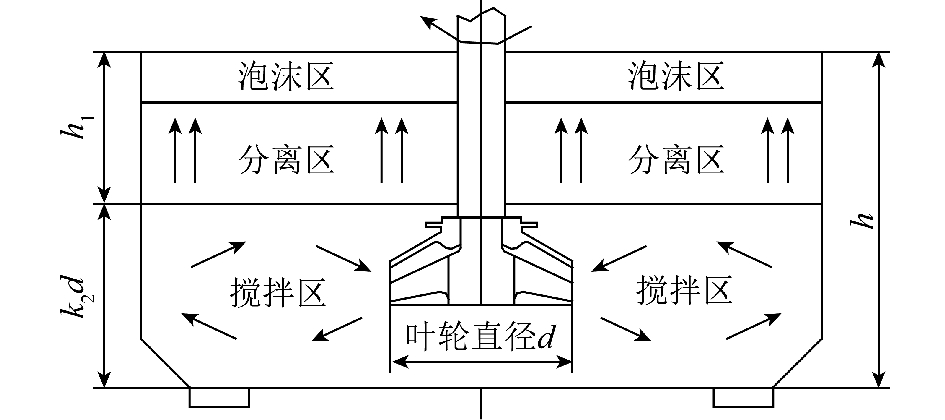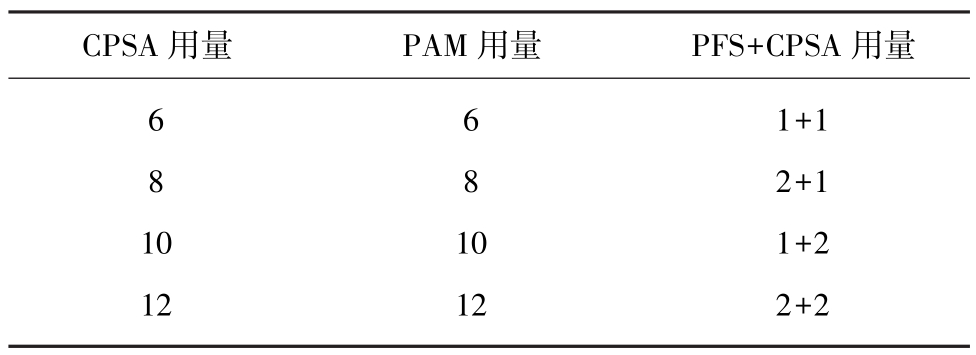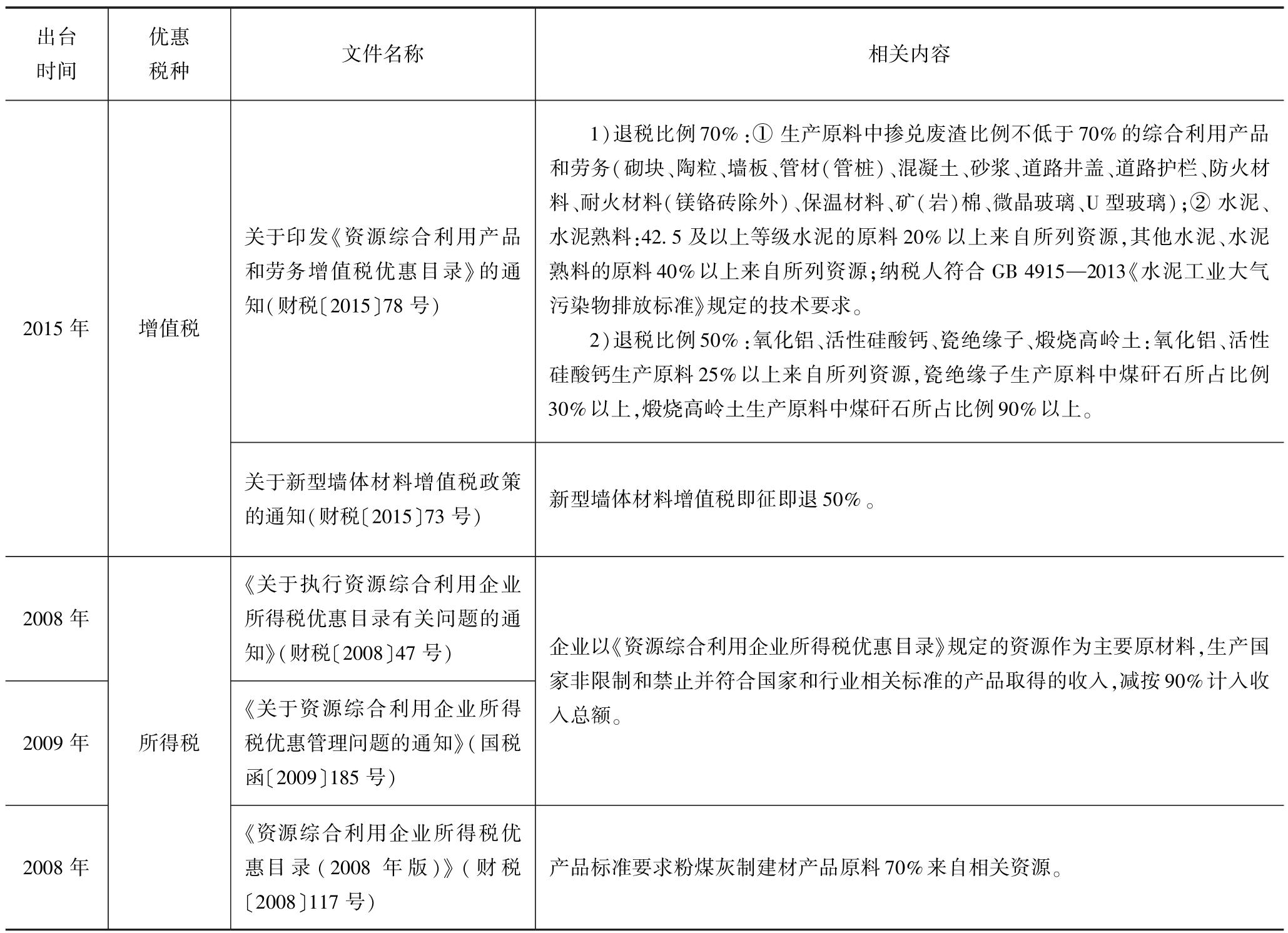煤气化细渣预热脱碳工艺燃烧特性研究
0 引 言
现代煤化工是煤炭清洁高效利用的有效途径,近年来在国家财税鼓励和政策支持下煤化工产业得到迅速发展。煤气化技术是现代煤化工的前段支柱,气化工艺产生了大量气化粗渣和气化细渣。气化粗渣从炉底直接排出,与锅炉灰渣成分相似,含碳量低,可作为道路建材的掺混原料或做回填处理;气化细渣因含碳量高、烧失量大,不符合建筑掺混原料国家标准和行业标准[1],难以直接用于建筑、道路工程,缺乏有效的规模化消纳方式。高含碳的气化细渣造成严重的资源浪费[2],占用大量土地资源,扬尘造成大气污染且长时间堆置或填埋后渗滤液还会污染土壤和水体[3-4]。采用合理有效方式规模化消纳气化细渣,可减轻其对环境的影响,同时回收利用其中的能源,从而保障煤化工企业可持续发展。
气化细渣含水量高、挥发分极低,能以低比例掺烧的方式进入炉膛燃烧[5],但处理量相对较少,且长时间持续掺烧对系统的稳定性、锅炉燃烧效率产生的负面影响有待验证。预热燃烧是低挥发分燃料实现稳定着火及燃烧的有效途径,全俄热能工程研究所首次提出一种煤粉预热燃烧新技术[6],将煤粉预热到约816 ℃后进行燃烧,保证了煤粉燃尽。中国科学院工程热物理研究所提出一种循环流化床预热耦合煤粉炉燃烧技术[7-11],第1阶段循环流化床对燃料点火和预热,第2阶段煤粉炉中可实现低挥发分燃料的稳定、高效燃尽,且NOx低排放。Liu等[12]提出了一种燃气燃煤预热技术,研究表明,稳定运行后,预燃室中煤的部分氧化可提供足够的热量维持预热室温度,只需少量燃气以防止预热室熄火,通过空气分级和延长燃烧区停留时间,可有效降低NOx排放。Lyu和王帅等[13-14]利用两级下降管式炉实现预热-燃烧,研究了预热温度、停留时间及燃烧温度等因素对燃尽及NOx排放的影响。现有预热燃烧技术难以实现高含水量、低挥发分气化细渣的脱水-预热-燃烧一体化规模化消纳。
近年来笔者团队致力于低挥发分、低热值燃料恒温预热-脱碳装置的预热脱碳工艺研发,60万t/a处理量的第1代装置已于新疆甘泉堡稳定运行2 a,对高含水量、低挥发分气化细渣进行处理,处理后气化细渣的含碳量符合建筑掺混原料国家标准和行业标准,实现了高水分和低热值气化灰渣的高效脱碳,证实了物料预热燃烧脱碳技术的可行性,设备现场运行图及设备工作流程如图1、2所示。本文针对该预热脱碳技术,利用热重试验平台进行恒温热重试验模拟该技术的物料预热和燃烧过程,以对比分析不同预热温度、不同燃烧气氛下气化细渣的燃烧特性;通过粒径分级后气化细渣特性分析发现,不同粒度气化细渣的固定碳、灰分及微观形貌差异较大,气化细渣分级预热恒温热重试验有利于预热脱碳工艺机理的研究,可为低挥发分低热值燃料恒温预热-脱碳装置规模化处理气化细渣提供理论指导。

图1 设备现场运行图
Fig.1 Site operation drawing of equipment

图2 设备工作流程示意
Fig.2 Equipment working diagram
1 试 验
1.1 气化细渣燃料特性
试验样品选用陕西延长中煤榆林能源化工有限公司的气化细渣,筛分后将样品分为<45、45~125、125~250、250~500、>500 μm共5级。不同粒度气化细渣的工业分析见表1。
表1 不同粒度气化细渣工业分析
Table 1 Proximate analysis of fine slag gasified
with different particle sizes

由表1可知,不同粒度气化细渣Vad<4.5%;粒度>45 μm的气化细渣FCad高,甚至高达78.75%;粒度<45 μm的气化细渣Aad高;全粒度气化细渣样品中FCad=47.80 %。
利用Gemini SEM 500 型场发射扫描电子显微镜观察气化细渣的微观形貌,如图3所示。
由图3可以发现,不同粒度的气化细渣均存在多孔不规则状颗粒和球形微颗粒,多孔不规则状颗粒主要是气化过程中煤焦发生膨胀和破碎形成的焦炭颗粒;球形微颗粒是气化过程高温环境使原料煤中的硅铝氧化物等熔融形成[15],粒度<45 μm气化细渣含有大量球形微颗粒,因而灰分较高;随着粒度增大,更多的焦炭被包裹在多孔不规则状颗粒内部而未充分气化,因而固定碳随粒度增大呈增加趋势。

图3 气化细渣的微观形貌
Fig.3 Micromorphology of gasification fine slags
1.2 试验方法
为探究不同粒度气化细渣在不同预热温度、不同氧气浓度条件下的燃烧特性,选取分级后产率较大且固定碳较高的45~125、125~250、250~500 μm三种粒度样品;采用Netzsch STA-409PC型热重分析仪进行分析,温度范围:室温~1 100 ℃,样品质量(10±0.5)mg。在无氧环境(N2气氛保护)、升温速率20 K/min下充分预热后,达到恒温段进行氧化脱碳,预热温度选取700、800、900、1 000 ℃;样品达到恒温段稳定10 min后从保护气氛切换到燃烧气氛,直至样品恒重,燃烧气氛为20% O2-80% N2混合模拟空气气氛、10% O2-90% N2混合模拟缺氧气氛,恒温热重试验过程示意如图4所示。

图4 恒温热重试验过程示意
Fig.4 Concept diagram of thermostatic thermogravimetric
experiment
2 试验结果与分析
2.1 不同燃烧气氛下的燃烧特性
卧式转窑低挥发分、低热值燃料恒温预热-脱碳装置燃烧区实际运行温度在900 ℃左右,综合考虑气化细渣粒径分级后的产率和固定碳,选取900 ℃预热温度下45~125、125~250、250~500 μm粒度3种样品在氧气浓度10%和21%下进行气化细渣燃烧特性试验,TG和DTG曲线如图5所示。

图5 不同燃烧气氛下气化细渣分级预热氧化反应
的TG和DTG曲线
Fig.5 TG and DTG curves of fractional preheating oxidation
reaction of gasified fine slag under different combustion atmospheres
由图5可见,3组粒度气化细渣样品曲线均存在明显的“转折点”,即开始失重和失重结束,且只有一个失重阶梯。从恒温温度至通入氧气(50~54 min)阶段,样品质量未发生明显变化,为恒温稳定段;从通入氧气开始,气化细渣样品中的焦炭在高温下迅速发生氧化反应,同一粒度气化细渣样品在不同氧浓度下失重曲线斜率存在明显差异,但失重曲线基本呈线性变化,只有燃烧后期的燃烧速率下降。表2为不同燃烧气氛下气化细渣预热氧化脱碳的失重量、燃烧时间和平均质量变化速率。可以看出,随燃烧气氛中氧浓度的增大,同一粒度分级的气化细渣样品的平均质量速率增大,燃尽时间缩短,高氧浓度明显缩短了气化细渣样品中焦炭的燃尽过程,使气化细渣在一定时间内可更充分燃尽。对比不同粒度级气化细渣样品发现,随着粒度增大,样品失重量增大、燃尽时间延长,说明大颗粒中含碳量更高,且其中的焦炭完全反应所需窑内停留时间更长。不同燃烧气氛下气化细渣颗粒燃尽时间的确定为卧式转窑低挥发分、低热值燃料恒温预热-脱碳装置中物料停留时间的确定提供了依据。
表2 不同燃烧气氛下的气化细渣分级预热
氧化反应的热重参数变化
Table 2 Thermogravimetric parameters of gasification
fine slag grading preheating oxidation reaction under
different combustion atmospheres

2.2 不同预热温度下的燃烧特性
卧式转窑低挥发分、低热值燃料在恒温预热-脱碳装置燃烧区的O2含量在10%,综合考虑气化细渣粒径分级后产率和固定碳,选取燃烧气氛为10% O2下45~125、125~250、250~500 μm样品,在预热温度700、800、900、1 000 ℃下进行气化细渣燃烧特性试验,其TG和DTG曲线如图6所示。
由图6可以看出,同粒度气化细渣样品在不同预热温度下燃尽后的剩余灰重占比基本保持不变;随着温度升高,同粒度气化细渣样品的最大质量变化速率增大,且较高温度(1 000 ℃)时增大明显,表明提高预热温度能够使气化细渣的燃尽特性得到明显改善。

图6 不同预热温度下气化细渣分级预热氧化反应的TG和DTG曲线
Fig.6 TG and DTG curves of gasification fine slag grading preheating oxidation reaction
at different preheating temperatures
表3为不同预热温下气化细渣预热氧化反应的热重参数。
表3 不同预热温度下气化细渣分级预热
氧化反应的热重参数变化
Table 3 Thermogravimetric parameters of gasification fine
slag grading preheating oxidation reaction at different
preheating temperatures

从表3可以看出,随着预热温度升高,同粒度的气化细渣样品平均质量变化速率增大,燃尽时间缩短。250~500 μm气化细渣样品在700 ℃预热时需9.9 min燃尽,而1 000 ℃时燃尽时间缩短至7.6 min,平均质量变化速率从8.29%/min增至10.43%/min,表明预热温度升高使气化细渣在一定时间内能更充分燃尽。对比不同粒度气化细渣样品发现,各预热温度下随着粒度增大,样品失重量增大,燃尽时间延长。不同预热温度下气化细渣燃尽时间的确定为卧式转窑低挥发分、低热值燃料恒温预热-脱碳装置中物料停留时间的确定提供了依据。
2.3 煤燃烧特性对比
卧式转窑低挥发分、低热值燃料恒温预热-脱碳装置燃烧区温度在850~900 ℃,燃烧气氛氧浓度在10%左右,综合考虑气化细渣粒径分级后产率和固定碳,选取预热温度为900 ℃,燃烧气氛为10% O2,125~250 μm气化细渣样品(XZ)与褐煤(HM)、无烟煤(WYM)、烟煤(YM)进行对比试验,TG和DTG曲线如图7所示。

图7 气化细渣与褐煤、无烟煤、
烟煤预热氧化反应的TG和DTG曲线
Fig.7 TG and DTG curves of preheating oxidation reaction between
gasification fine slag and lignite,anthracite and bituminous coal
由图7可知,气化细渣中空干基挥发分极低,与无烟煤相似,在恒温稳定段的失重起点相近;烟煤与褐煤挥发分较高,因此失重起点较前2者下移。因预热段预热温度达900 ℃,煤样中挥发分几乎全部析出,DTG曲线表示焦炭质量变化速率,与3种煤样相比,气化细渣样品质量变化速率较大,认为在气化过程中气化细渣中的焦炭颗粒孔隙结构发育较好,因此在相同预热温度、相同燃烧氧浓度下更易发生反应。
3 结 论
1)通入O2后,气化细渣样品迅速发生氧化反应,900 ℃、10% O2下的燃尽时间在6.6~9.4 min;900 ℃、21% O2下的燃尽时间在3.7~5.6 min,NOx排放量在规定范围时,可适当提高窑内燃烧区氧浓度以缩短燃尽时间。
2)随预热温度的升高,同粒度的气化细渣样品平均质量变化速率增大,燃尽时间缩短,预热温度的升高可改善气化细渣的燃尽特性,使气化细渣在一定时间内能更充分燃尽,在设备安全运行下可适当提高窑内燃烧区温度以更快燃尽。
3)不同燃烧气氛、不同预热温度下,随气化细渣粒度增大,失重量增大,燃尽时间延长,平均质量变化速率递减。因此,本文提出的“预热-脱碳装置”可根据物料粒度合理调整物料停留时间,以实现充分燃尽。
[1] 杨帅,石立军. 煤气化细渣组分分析及其综合利用探讨 [J]. 煤化工,2013,41(4):29-31,8.
YANG Shuai,SHI Lijun. Analysis of gasification fine slag components and discussion on their comprehensive utilization[J]. Coal Chemical Industry,2013,41(4):29-31,8.
[2] MONTAGNARO Fabio,BRACHI Paola,SALATINO Piero. Char-wall interaction and properties of slag waste in entrained-flow gasification of coal [J]. Energy & Fuels,2011,25(8):3671-3677.
[3] WANG Yafeng,TANG Yuegang,LI Ruiqing,et al. Measurements of the leachability of potentially hazardous trace elements from solid coal gasification wastes in China [J]. Science of The Total Environment,2021,759:143463.
[4] 刘淑琴,马伟平. 富氧地下气化灰渣中有害微量元素的浸出行为 [J]. 煤炭学报,2020,45(12):4201-4208.
LIU Shuqin,MA Weiping. Leaching behavior of harmful trace elements from ash residue of underground gasification with oxygen [J]. Journal of China Coal Society,2020,45(12):4201-4208.
[5] 杜杰,戴高峰,李帅帅,等. 气化细渣基础燃烧特性试验研究 [J]. 洁净煤技术,2019,25(2):83-88.
Du Jie,DAI Gaofeng,LI Shuaishuai,et al. Experimental study on the fundamental combustion characteristics of fine slag from gasification [J]. Clean Coal Technology,2019,25(2):83-88.
[6] RABOVITSER Joseph,BRYAN Bruce,KNIGHT Richard,et al. Development and testing of a novel coal preheating technology for NOx reduction from pulverized coal-fired boilers [J]. Gas,2003,1(2):4014-4022.
[7] MAN Chengbo,ZHU Jianguo,OUYANG Ziqu,et al. Experimental study on combustion characteristics of pulverized coal preheated in a circulating fluidized bed [J]. Fuel Processing Technology,2018,172:72-78.
[8] 潘飞,朱建国,刘敬樟. 循环流化床预热燃烧实验研究及数值模拟[J/OL].洁净煤技术.[2021-12-30].https://kns.cnki.net/kcms/detail/11.3676.TD.20201230.1041.003.html.
PAN Fei,ZHU Jianguo,LIU Jingzhang. Experimental study and numerical simulation of circulating fluidized bed preheating combustion [J]. Clean Coal Technology.[2021-12-30].https://kns.cnki.net/kcms/detail/11.3676.TD.20201230.1041.003.html.
[9] 吕清刚,王俊,朱建国. 循环流化床预热的无烟煤粉燃烧特性试验研究 [J]. 锅炉技术,2011,42(5):23-27.
LYU Qinggang,WANG Jun,ZHU Jianguo. Experimental study on combustion characteristics of anthracite pulverized coal preheated by circulation fluidized bed [J]. Boiler Technology,2011,42(5):23-27.
[10] ZHU Jianguo,OUYANG Ziqu,LYU Qinggang. An experimental study on NOx emissions in combustion of pulverized coal preheated in a circulating fluidized bed [J]. Energy & fuels,2013,27(12):7724-7729.
[11] ZHU Shujun,LYU Qinggang,ZHU Jianguo,et al. Experimental study on NOx emissions of pulverized bituminous coal combustion preheated by a circulating fluidized bed [J]. Journal of the Energy Institute,2019,92(2):247-256.
[12] LIUChangchun,HUI Shien,PAN Su,et al. Experimental investigation on NOx reduction potential of gas-fired coal preheating technology [J]. Energy & Fuels,2014,28:6089-6097.
[13] LYU Zhaomin,XIONG Xiaohe,YU Shilin,et al. Experimental investigation on NO emission of semi-coke under high temperature preheating combustion technology [J]. Fuel,2021,283:119293.
[14] 王帅,龚彦豪,牛艳青,等. 煤粉预热-燃烧耦合过程中NO生成研究 [J]. 中国电机工程学报,2020,40(9):2951-2959.
WANG Shuai,GONG Yanhao,NIU Yanqing,et al.Study on NO generation in the coupling process of preheating and combustion of pulverized coal[J]. Proceedings of the CSEE,2020,40(9):2951-2959.
[15] 刘坤基. 气化细渣中残碳催化石墨化研究 [D].徐州:中国矿业大学,2019.
LIU Kunji. Study on catalytic graphitization of residual carbon in gasification fine slag [D].Xuzhou:China University of Mining and Technology,2019.
Study on combustion characteristics of preheating decarburization process for fine slag in coal gasification
SHI Zhaochen,WANG Guishan,WANG Xuebin,et al.Study on combustion characteristics of preheating decarburization process for fine slag in coal gasification[J].Clean Coal Technology,2021,27(4):105-110.

















